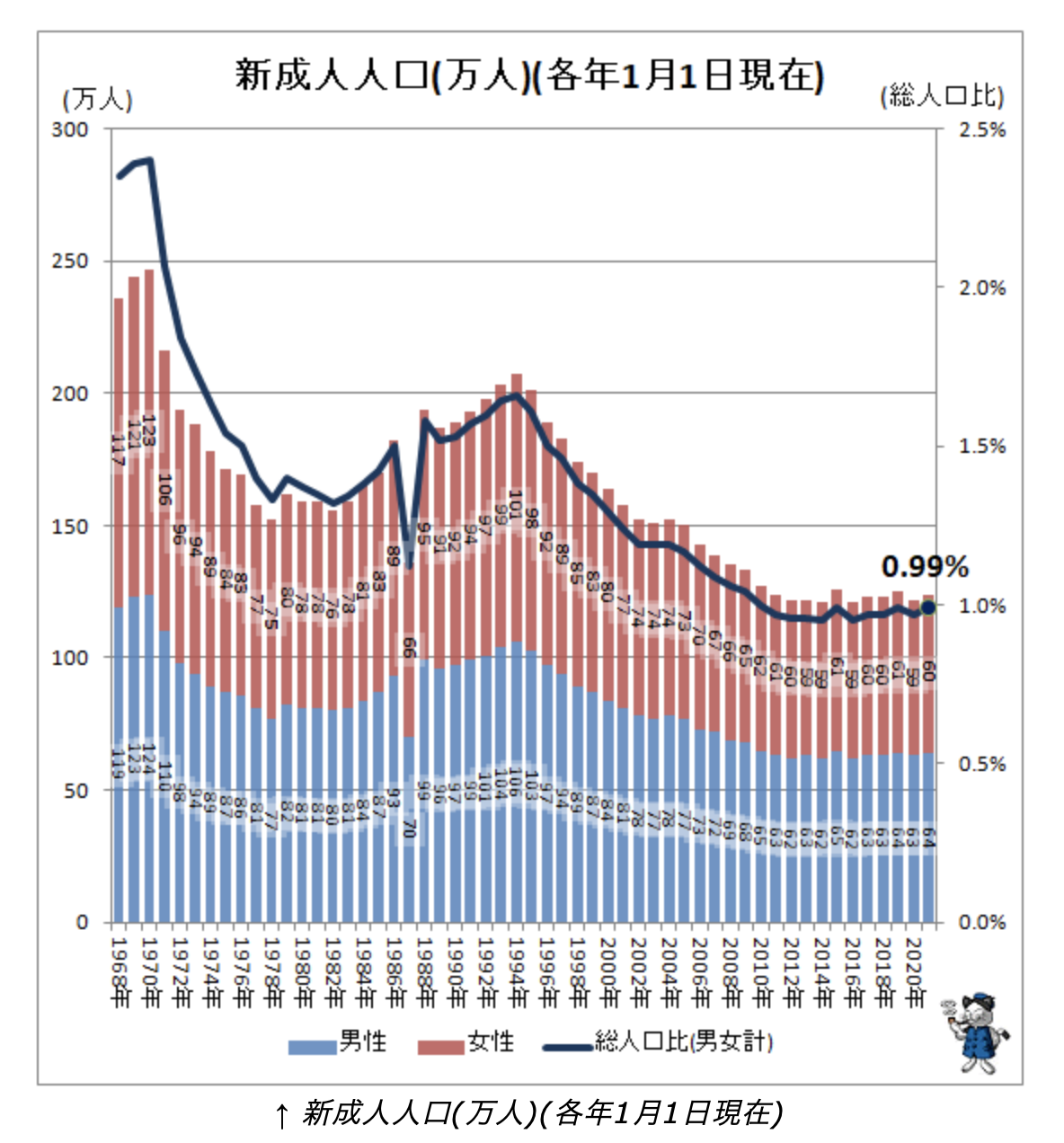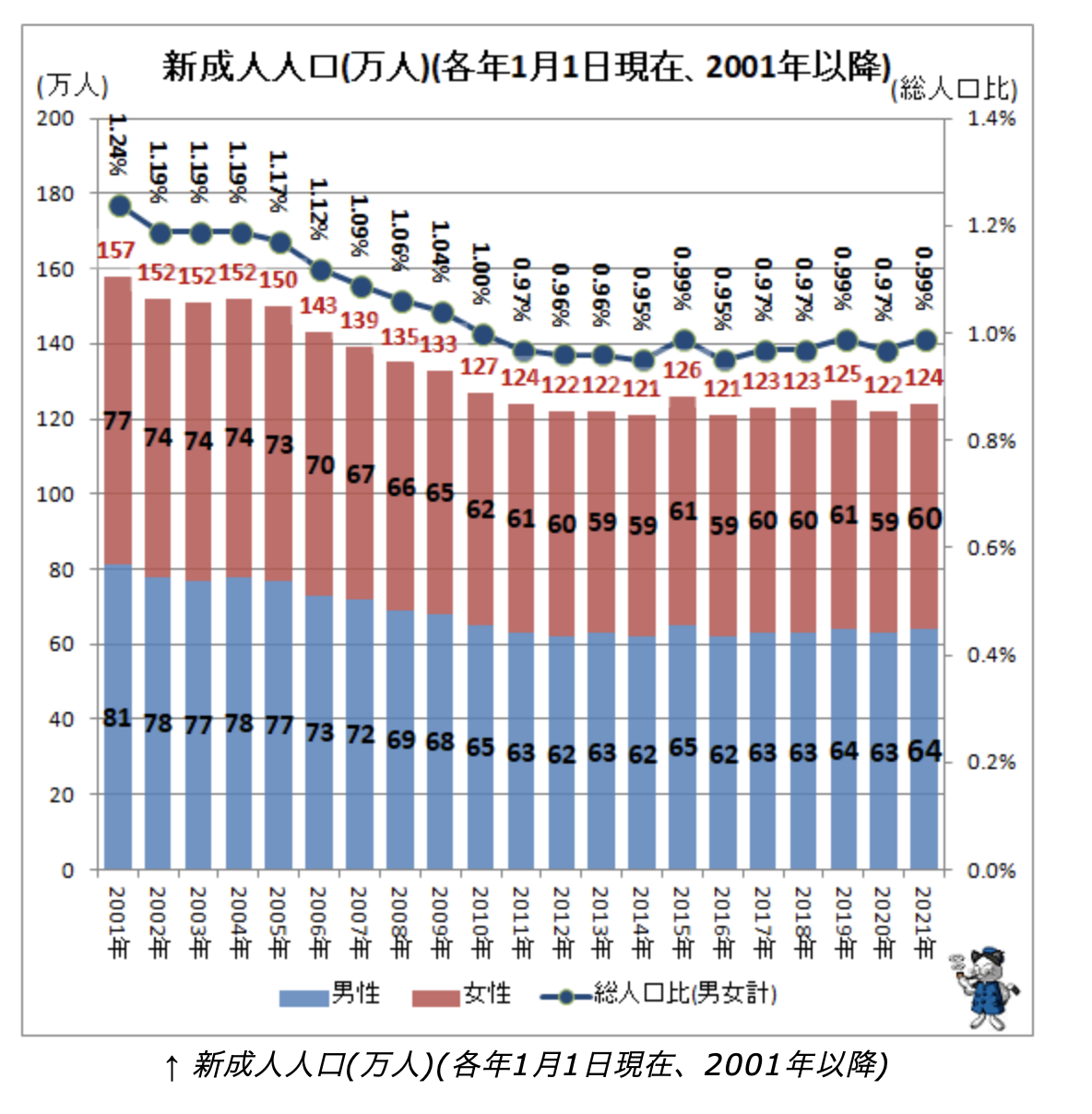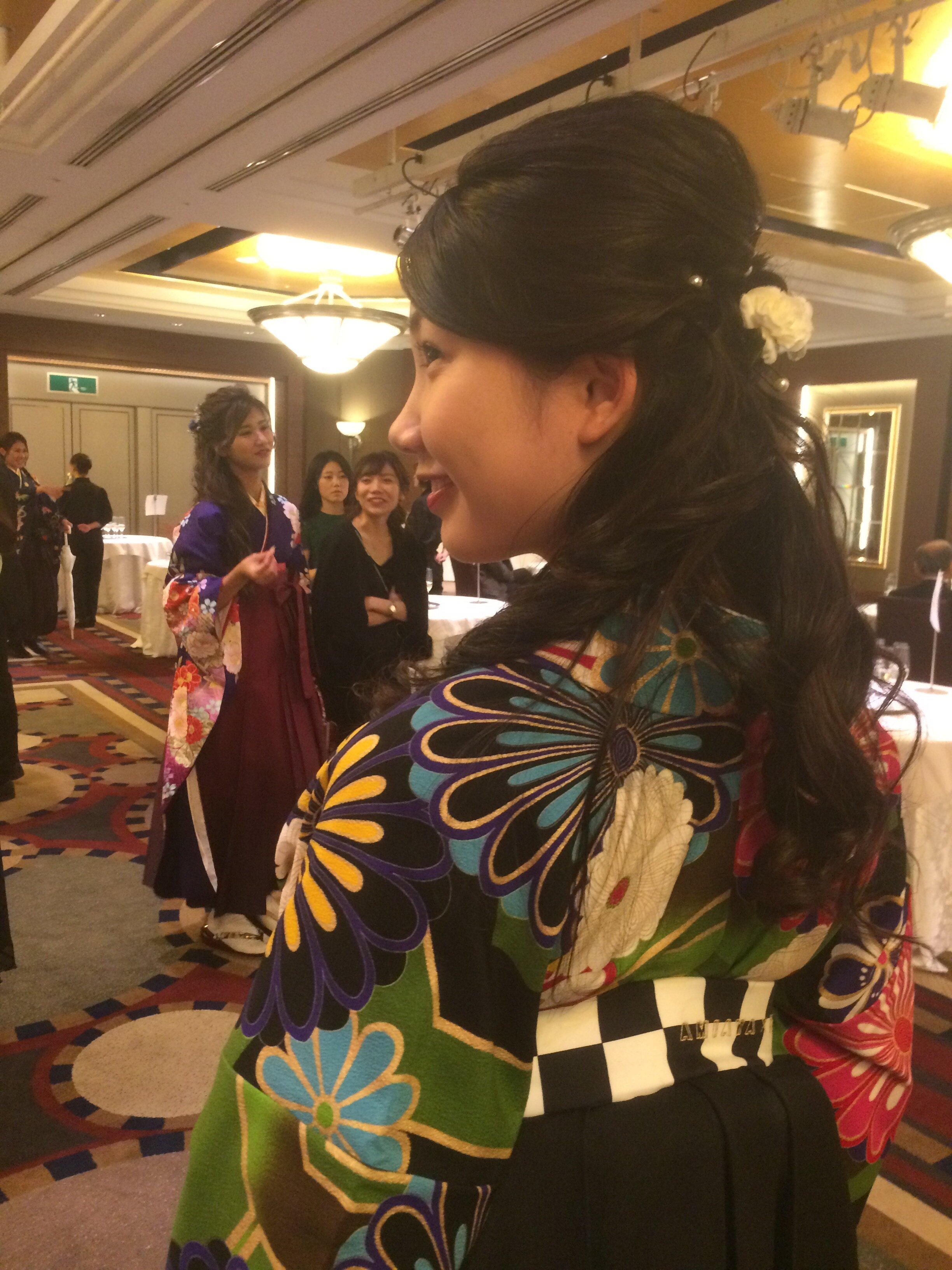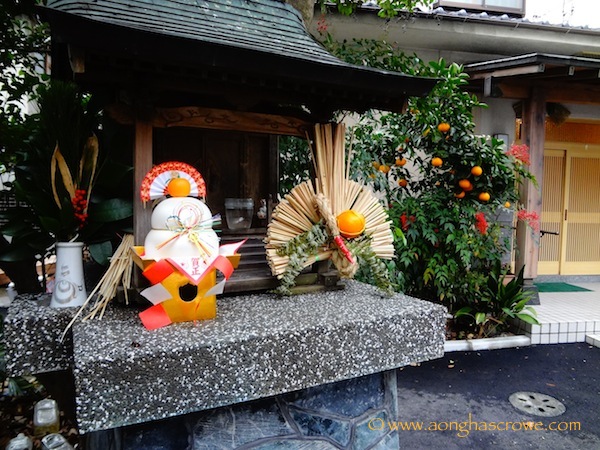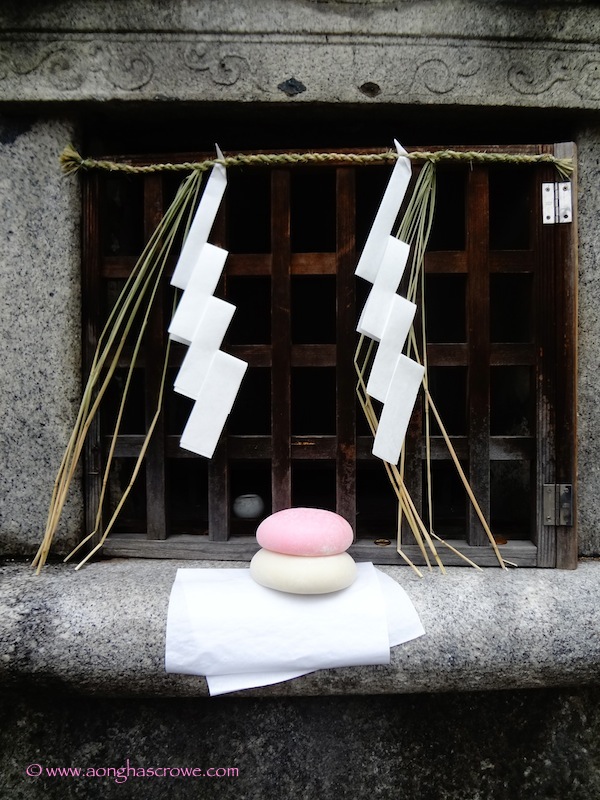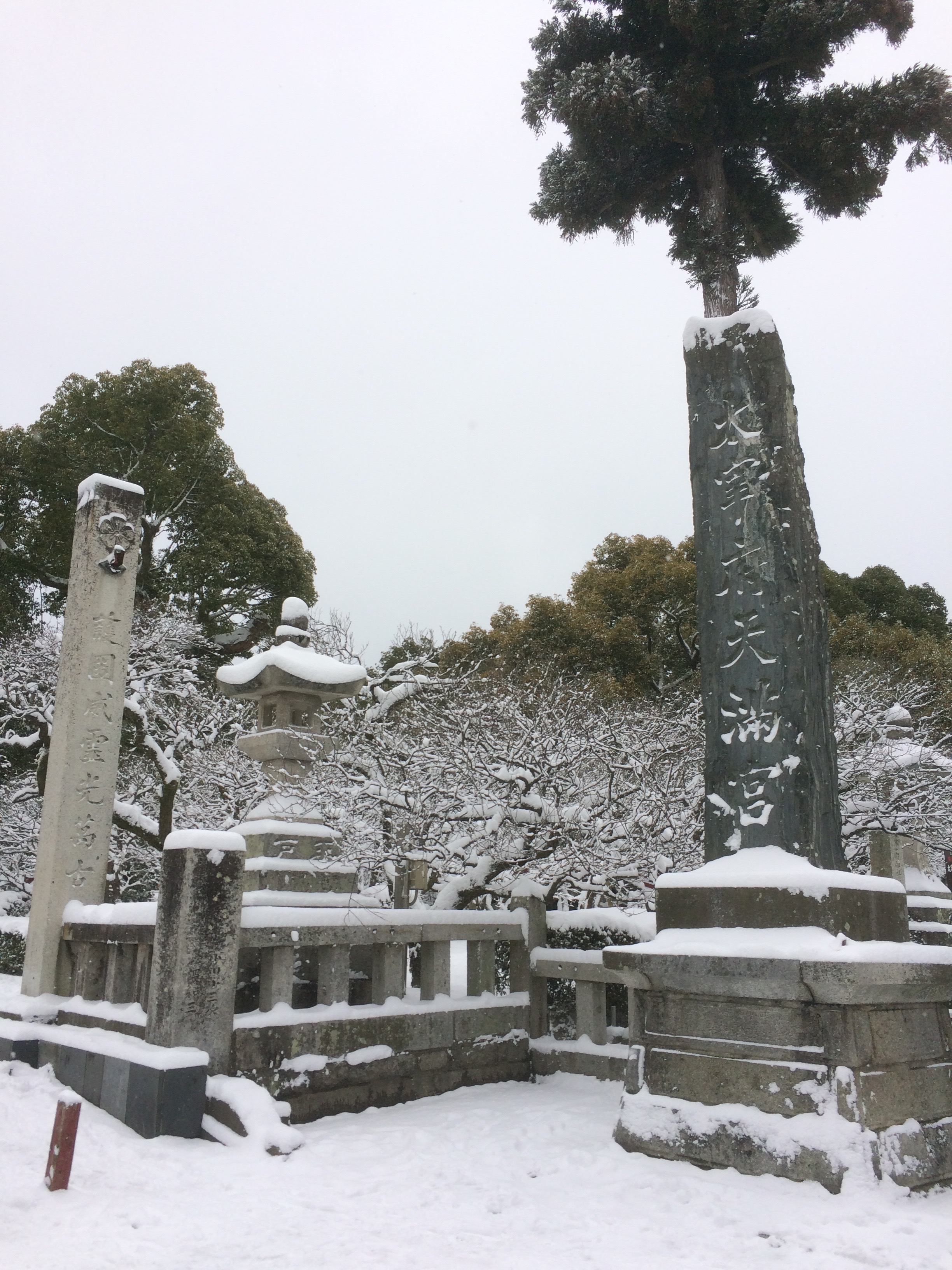For someone like me who is fascinated by Japanese traditions and culture, Seijin-no-hi, or Coming-of-Age Day, held on the second Monday of January, is one of the many days to look forward to in Japan. For on that day, you can find many young women, dressed in elaborate kimono, their hair coiffed, make-up and nails perfect—a stunning display of beauty like exotic monocarpic flowers, blooming once after 20 years of growth. Although men, too, occasionally dress in flashy kimono their hair done up in wild pompadours, most of them wear conservative suits more befitting of the occasion. But let’s be honest, I’m much more interested in the women.
The modern version of Seijin-shiki began in Warabi City, Saitama on 22 November 1946. The Pacific War had ended half a year earlier and much of Japan lay in ruins. The ceremony, called Seinensai (青年祭, lit. “Youth Festival”) was held to encourage the young people of that broken country to rise up and dispel the dark mood of the times. Two years later, the ceremony was established as a national holiday originally held on the fifteenth of January. The original date is significant in that before the adoption of the Gregorian Calendar, the full moon fell on the fifteen of every month in Japan, and the fifteenth day of the firstmonth of the year was known as Ko-shōgatsu (小正月, lit. “little New Year”), the day that New Year’s had been traditionally celebrated until the Edo Period. Thanks to the “happy Monday system”, however, the date of Seijin-shiki has been held on the second Monday of January since the year 2000.
While today’s Seijin-shiki has its roots in the immediate post-war years, the rite of passage can actually be traced back to the Nara Period (710-794). In those days, genpuku (元服)—a coming-of-age ceremony modeled, like so many things in that era, after the customs of the Tang Dynasty of China (618~907)—was held for boys between the ages of 10 and 20 (some sources say between 12 and 16). In the genpuku ceremony, which literally means “head” (元) wearing” (服), a boy’s hair was fashioned in the manner of an adult’s, and he no longer wore the clothing of a child (see below). Moreover, his birth name was exchanged for an adult one, or eboshi-na (烏帽子名), and he was given a brimless ceremonial court cap, or kanmuri (冠). The adoption of the new hairstyle and clothing signified the assumption of adult responsibilities.
Women, on the other hand, would receive a long pleated skirt called a mogi (裳着), to replace the wide-sleeved, unisex hakama-githey wore as children. The timing of a woman’s coming-of-age came typically after menarche, or in her early to late teens, and indicated that she was of marriageable age. While that may seem scandalously young to us in 2021, during the Nara Period, the life expectancy was between 28 and 33, and would get progressively shorter over time rather than longer. In the Muromachi Period (1336~1573), the average life expectancy was a mere blip of 15 years. Imagine that.
In the past, coming-of-age ceremonies were for the most part limited to those in the higher echelons of Japanese society which included the nobility and kugé aristocratic class, and from the Kamakura Period (1185~1333) on, the samurai warrior class, as well.
Children of the court prepared for roles they would assume later on from as young as three or four years of age, studying court ceremonies, Buddhist doctrine, and ethics. Later, they moved on to mastering the skills of calligraphy, which in classical times was indispensable for a courtier.
In the age of the samurai, from the Kamakura to the Edo Periods (1185~1868), the genpuku ceremony featured the placing of a samurai helmet, rather than a court cap, on the head of the new adult male. During periods of unrest such as the Sengoku Jidai, or Warring States Period, (1467~1615), genpuku was often delayed until a son was full-grown in order to spare the inexperienced warrior the duty to fight, and most likely die, in battle. As peace reigned, however, the age considered appropriate for coming-of-age was lowered in response to pressures to marry and produce heirs, which could not happen until after the ceremony had been performed. In the sixteenth century, the average coming-of-age ceremony for samurai was 15 to 17, and by the 1800s it had dropped to 13 to 15.
Today, both men and women, who will reach the age of adulthood, i.e. twenty, by April 1, take part in the modern-version of Seijin Shiki. The ceremony is held at a venue in the city or town where the new adult resides. There, government officials make speeches and hand out presents. For many of the participants, the day is considered a class reunion of sorts because after the ceremony, they often meet friends from their junior high school at a formal party organized by their former classmates.
Why do women today wear the long-sleeved furisode kimono?
If my reading of the Japanese is correct, and do correct me if it isn’t, but in the past the furisode that young unmarried women of means wore had much shorter sleeves. Youths, both male and female who were not yet old enough, wore what is known as fudangi, or everyday kimono. As Japan entered the Edo Period, though, the design of furisode gradually came to resemble that of today’s furisode. The longer and more exaggerated the sleeves became, the more impractical they were for everyday use, and eventually came to be reserved as formal attire for unmarried women. By the Shōwa Period, furisode had become established as a costume worn only on special occasions, such as Coming-of-Age Day and weddings. The swinging of the long sleeves of the kimono themselves is said to act as a kind of talisman against evils (魔除け) or drive out evil spirits (厄払い).
This year with the coronavirus pandemic still raging we could use some good luck charms. Unfortunately for those Japanese who have been anticipating the day, many local governments have either cancelled or postponed their planned Coming-of-Age Day ceremonies. As far as I know, Fukuoka City is still going ahead with its event, which will be held at Marine Messe. The ceremony will be shortened and split into two groups in order to prevent the spread of COVID-19. The event will also be live-streamed so that others can attend virtually.
In 2021, there will be 1,240,000 “new adults” or shinseijin (新成人), an increase of 200,000 over last year. For the past 11 years running, the percent of population represented by these new adults has been less than 1%.





